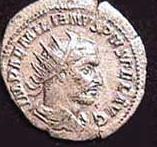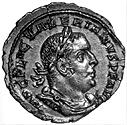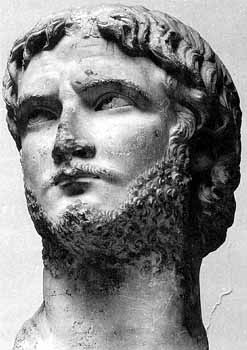|

SEPTEMBER MEETING
DUETS IN OPERA
|
The oldest surviving opera, Euridice, by Jacopo Peri,
had its first public performance in Florence’s Pitti Palace on October
6, 1600, the day marking the birth of opera as we know it, one of very
few art forms whose beginnings can be so precisely established. Since
opera traces its origin to Italy and much of it is associated with Italian
performers and composers, the Italian Club presents at least one program
on opera annually. Our September 2002 program will be brought to
us by Susan Wohl, who last year presented “Viva Verdi” on the occasion
of the centenary of the great composer.
Instead of focusing on the work of one composer, this program
will look at the subject from an entirely different perspective - duets
in opera.
The operatic duet is an ensemble for two voices, often
used to mark the end of an act or which principal characters (generally
lovers) are parted or reunited.
During our program, a selection of ten pieces will be presented – many,
but not all, from the classic Italian repertoire. To provide an interesting
comparison, three areas of duets have been chosen: woman-woman, man-man,
and man-women. As a bonus we will also hear a trio - two women with
a man, and, finally, a man and a woman plus chorus. Susan Wohl is
a lecturer at the Lifelong Learning Institute of Washington University.
She will facilitate “An Operatic Mélange”, an LLI course beginning
October 1, 2002.
|
|
Next Meeting Wednesday, Septemner 18, 2002
Cocktails 6:30 PM - Dinner 7:00 PM
Da Baldo's Restaurant
RSVP Marie Wehrle
(314) 544-8899
or by email
|

RECAP OF AUGUST
MEETING
| AUGUSTUS, VIRGIL AND THE AENEID |
Our August speaker was Dr. Anna Amelung who discussed
Vergil’s Aeneid, universally acclaimed as the greatest work in all
of Roman literature. Written in the first century B.C., the poem
tells of the Trojan warrior, Aeneas who, after the fall of Troy and years
of wanderings and tribulations, reached the shores of the Italian peninsula
and established what was to become the Roman race. In the Aeneid,
Vergil presents Aeneas as the heroic ancestor of the Romans and as a man
whose thoughts, values, and actions should be the model not only for the
Romans of Vergil’s time but also for future generations, therefore in the
Aeneid,
Aeneas is both epic hero and social hero. The Aeneid was written
during the reign of Octavian (a.k.a. Augustus), the first, and arguably
the greatest, of all Roman emperors. After a century of seemingly
continuous civil wars, under his leadership the empire finally enjoyed
a period of peace during which many Romans began to question the purpose
and role of their city. In his Aeneid, Vergil provided them
with an answer: in addition to describing the origins of the Roman
people, his poem has as its central theme the notion that the very existence
and subsequent triumph of Rome was something specifically willed by the
gods, implying that the mission decreed by the gods for Rome was to bring
peace, law and civilization to the entire earth.
Moreover, the Aeneid served as clever political
propaganda, indicating that it was none other than Augustus who was sent
by the Gods to fulfill that heavenly ordained mission. Conveniently,
the fact that Augustus claimed to be of divine origin – being the adopted
son of Julius Caesar, who himself claimed descent from the goddess Venus
– probably helped to get the point across. The Aeneid is important
in Latin literature - not only because of its epic tale and colossal artistic
merit, but also because it embodies the values, hopes, fears, and expectations
of the new Empire established by Augustus and because it mirrors the values
of the Roman society of the time. Augustus clearly understood the
Romans’ desire for order and peace, which combined with his appreciation
of the vital importance of boosting Roman morale and national pride and
the need to harmonize all social classes into a universal acceptance of
his new regime. Vergil, on his part, understood with equal clarity
the need of Roman society to discover and understand its roots and mythical
history.
In a masterful presentation, Amelung succinctly summarized
Vergil’s epic masterpiece, some 15,000 lines in length, into a sparkling
35 minute slide presentation which told the poem’s story, illustrated many
major scenes, characters, and events, probed its multi-level implications,
and finally raised some interesting questions regarding seeming contradictions
between the poem’s depiction of “ideal” Roman behavior and certain
actions on the part of Aeneas.
Vergil, actually Publius Vergilius Maro, was born of humble origin
in 70 BC in Andes, a small provincial town near Mantua, died in 19 BC at
the age of 51, and is buried near Naples. He loved nature, raised
bees, had deeply religious feelings, and remained all his life a farmer
at heart.
Although of modest means, his parents understood the importance
of a good
education: Vergil studied first in Mantua, then in Cremona, next
he went to Milan and finally to Rome. His other major poems are the
Eclogues
(poems dealing with shepherds), published in 37 BC and the Georgics (a
sort of farmer’s manual), published in 29 BC. He spent the last ten
years of his life working on the Aeneid, which was unfinished at the time
of his death. He was a careful worker, in fact a perfectionist, and
instructed his friends to burn the Aeneid if he should die before
completing it; Augustus, however, refused to destroy the poem and saved
it for posterity.
Anna Amelung, was born in Russi, near Bologna, and received
the Laurea in Foreign Languages from the Università di Bologna followed
by a Ph.D. in French Literature from Washington University. After
teaching in France, Italy, and at WU, she now teaches Latin and French
at University City High School. She is President of the Classical
Club of St. Louis and an active member of the Italian Club.
|
|

L’ANGOLO DEL PRESIDENTE
By Gene Mariani |
 |
|
WELCOME NEW MEMBERS
|
We are please to announce that Miss Katiuscia O’Brian
was elected a member of the Italian Club at the August 21 meeting.
Welcome to the Club, Katiuscia – it is good to have you with us.
|
CONDOLENCES
|
On behalf of the Italian Club, we wish to extend our sympathy
and condolences to Giuseppe LoMagno, husband of member Carla
Bossola, on the death of his mother, Mrs. Giovanna LoMagno,
who died on July 4, 2002 in the town of Vittoria (provincia di Ragusa).
|
|
|
|

|
ANNOUNCEMENTS
COLUMBUS DAY CORPORATION AWARDS
|
Congratulations to Italian Club member Frank Borghi on winning
the St. Louis Columbus Day Corporation's 2002 Spirit of Columbus Award
and to Father Vincent Bommarito on being elected the 2002
Parade Grand Marshall. A recognition dinner will be held on September
15. For information or tickets contact Gabriele Lancia (862-0707)
|
|

FILM AND OPERA SERIES
|
The Club’s film and opera series will continue this autumn
at the St. Louis Bocce Club in the Hill neighborhood. There
will be two films and two operas as listed below. Films will be introduced
by Carla Bossola and operas by Dorotea Rossomanno-Phillips.
All programs are in Italian with English subtitles and will be held on
Friday evenings at 7:30 p.m.
Friday, September 27. Big Deal on Madonna Street (L’audace
colpo dei soliti ignoti)
A group of bumbling thieves continuously make mistakes as they stumble
through their plans to rob a safe in a pawnshop. Stars Marcello Mastroianni,
Toto’, Claudia Cardinale, Vittorio Gassman. Directed by Mario Monicelli.
Friday, October 11. La Traviata.
Director Franco Zeffirelli’s lush, scintillating, gorgeous and totally
unforgettable version of Giuseppe Verdi’s passionate story of the love
affair between the beautiful courtesan Violetta (Theresa Stratas) and the
weak Alfredo (Placido Domingo), and his father’s intervention for the sake
of the family’s reputation. Glorious, glorious music – Verdi at his
best.
Friday, November 1. La strada
This noted and widely acclaimed Fellini masterpiece, with its haunting
melodic theme by Nino Rota won the 1956 Academy Award for best foreign
language film. A gentle, waif-like simpleton, Gelsomina (Giuletta
Masina) is sold by her impoverished family into a “marriage” to the brutish
Zampanò (Anthony Quinn), a small-time circus strong man.
Friday, November 15. Rigoletto
Verdi’s masterpiece of intriguing twists, turns, vendettas, seduction,
and betrayal. The unhappy plight of court jester Rigoletto, his ill-fated
daughter, Gilda, and the debonair but ruthless Duke of Mantua (Luciano
Pavarotti), all told to some of the most glorious melodies, arias, and
choruses ever written.
|
|

Regata storica
|
The Historical Regatta (Regata Storica) is the
most typically Venetian rowing race along the scenic Canal Grande.
It is a spectacular competition whose origins are the rowing races that
were always popular in Venice, since it was considered vital for the city
to have expert oarsmen. The Regata Storica, raced in Venice
every year on the first Sunday of September, is the most important row
race and is preceded by a beautiful cortege of historical boats, with crews
dressed in historical and traditional costumes.
In ancient times, before each race, it was necessary to
have a fleet of bissone (typical long boats) to precede the race
and keep order. These boats still take part in the parade but no
longer perform a "police" function.
The traditional reference points of the regatta are: the
spagheto,
a rope stretched across the starting point in front of the public gardens;
the paleto, a pole driven into the centre of the Grand Canal
in front of the Church of Sant'Andrea de la Zirada, around which the boats
must turn before going back up to the course, and the machina, a
construction erected on a wooden raft richly carved, painted and gilded,
that marks the finish the race and on which the prize-giving ceremonies
are held.
These regattas, which were gradually transformed, are still
held today with all the enthusiasm of past times, the Historical Regatta
being the most important of all. Held every year on the first Sunday in
September, this is the regatta of excellence, enthralling the Venetians
and attracting a crowd of enthusiastic tourists. It starts with the Historical
Procession, with its parade of XVI century costumes that re-enact the unforgettable
arrival in Venice of Caterina Cornaro, Queen of Cyprus. The finish
line is at the bend in the Grand Canal, between Palazzo Balbi and Ca' Foscari.
|
|

The Italian Club of St. Louis
|
|
|
|


| I capolavori della poesia italiana
Giuseppe Ungaretti (Alessandria d’Egitto
1888 – Milano 1970) nacque da genitori italiani provenienti da Lucca.
Trascorse la sua giovinezza nel clima multietnico della città egiziana
e più tardi si trasferì a Parigi, che a quell’epoca stava
attraversando un felice momento culturale. Allo scoppio della prima
guerra mondiale Ungaretti era in Italia e andò al fronte.
Durante il ventennio fascista fu riconosciuto come grande poeta e dopo
la seconda guerra mondiale rivestì importanti cariche accademiche.
Molte delle sue poesie, come quella seguente, rivivono le sue esperienze
di soldato sul fronte del primo conflitto mondiale.
San Martino del Carso
di Giuseppe Ungaretti
Di queste case
non è rimasto
che qualche
brandello di muro
Di tanti
che mi corrispondevano
non è rimasto
neppure tanto
Ma nel cuore
nessuna croce manca
È il mio cuore
il paese più straziato
Valloncello dell’Albero Isolato il 27 agosto 1916
|
|
| (Continua dal numero precedente)
 Emilio
Emiliano (207 – 253) (Imperatore 253). L’impero di Emiliano
durò poco più di tre mesi. Benché il Senato
avesse ratificato la sua nomina, i soldati di Gallo e Volusiano avevano
proclamato imperatore il loro comandante, Publio Licinio Valeriano,
il quale, con un esercito più forte e numeroso di quello di Valeriano,
si preparava a combattere per ottenere il titolo di imperatore. I
soldati di Emiliano, sapendo di non essere in grado di vincere, trucidarono
Emiliano vicino a Spoleto e si schierarono dalla parte di Valeriano. Emilio
Emiliano (207 – 253) (Imperatore 253). L’impero di Emiliano
durò poco più di tre mesi. Benché il Senato
avesse ratificato la sua nomina, i soldati di Gallo e Volusiano avevano
proclamato imperatore il loro comandante, Publio Licinio Valeriano,
il quale, con un esercito più forte e numeroso di quello di Valeriano,
si preparava a combattere per ottenere il titolo di imperatore. I
soldati di Emiliano, sapendo di non essere in grado di vincere, trucidarono
Emiliano vicino a Spoleto e si schierarono dalla parte di Valeriano.
 Valeriano(200 – 260) (Imperatore 253 - 260) e Gallieno
(218 – 268) (Imperatore 253-268). Come abbiamo visto
precedentemente, il senatore Licinio Valeriano aveva esercitato
la carica di censore sotto l’imperatore Decio, una posizione importante
e rispettata che lo aveva reso popolare presso i senatori. Inoltre
veniva da nobile e antica famiglia romana, perciò la sua scelta
fu sanzionata con entusiasmo dal Senato, che approvò pure quando
associò all’impero il figlio Egnazio Gallieno con il titolo
di Augusto. Le continue invasioni e ribellioni ai confini
dell’impero convinsero Valeriano che era meglio dividere il potere, per
cui diede il governo delle operazioni militari in Occidente al figlio e
tenne per sé la parte orientale.
Valeriano(200 – 260) (Imperatore 253 - 260) e Gallieno
(218 – 268) (Imperatore 253-268). Come abbiamo visto
precedentemente, il senatore Licinio Valeriano aveva esercitato
la carica di censore sotto l’imperatore Decio, una posizione importante
e rispettata che lo aveva reso popolare presso i senatori. Inoltre
veniva da nobile e antica famiglia romana, perciò la sua scelta
fu sanzionata con entusiasmo dal Senato, che approvò pure quando
associò all’impero il figlio Egnazio Gallieno con il titolo
di Augusto. Le continue invasioni e ribellioni ai confini
dell’impero convinsero Valeriano che era meglio dividere il potere, per
cui diede il governo delle operazioni militari in Occidente al figlio e
tenne per sé la parte orientale.

Benché la storia non gli abbia perdonato le persecuzioni dei
Cristiani sia durante l’impero di Decio che durante il proprio impero,
Valeriano fu un imperatore saggio e irreprensibile. In principio
Valeriano e Gallieno ebbero abbastanza successo nel proteggere la Gallia
contro gli invasori germanici, ma durante gli anni 257-258 le invasioni
aumentarono: in occidente i Franchi entravano nella Gallia e la Spagna
e gli Allemanni invadevano l’Italia, mentre nell’oriente i Goti minacciavano
l’Asia Minore e i Persiani invadevano la Siria. Dopo aver fermato
l’invasione dei Goti, l’esercito di Valeriano era in pessime condizioni,
decimato dalla peste e dalla mancanza di viveri, perciò l’imperatore
pensò di venire a trattative con Shapur, il re dei Persiani.
Invitato da Shapur a un convegno, vi si recò con una scorta poco
numerosa e fu fatto prigioniero. Durante la sua prigionia Valeriano
subì molte umilaizioni e dopo qualche anno fu ucciso.
Gallieno, ora il solo imperatore, non seguì la politica
del padre nei riguardi dei Cristiani, con i quali concluse trattative di
pace che durarono quaranta anni, ma spesso alienò i senatori, che
videro il loro potere molto diminuito durante il suo impero; infatti venivano
sempre più esclusi dal comando militare che invece veniva dato ai
figli dei centurioni.
In Gallia, dove le truppe si ribellarono e acclamarono
vari imperatori, Gallieno dovette affrontare numerose ribellioni contro
la sua autorità, tuttavia per qualche anno riuscì a mantenere
la pace e nel 262 celebrò i Decennalia (dieci anni di impero)
con molta pompa e con grandi feste. Sotto di lui l’impero godé
di un periodo di tranquillità e di pace mentre la rinnovata ammirazione
per la civiltà ellenica portò un rinascimento delle arti
e della filosofia, di cui il maggior esponente era il filosofo Plotino.
Ma presto le invasioni dei Goti ricominciarono e Gallieno dovette tornare
in Grecia, dove fu assassinato a tradimento insieme al figlio e al fratello.
(continua al prossimo numero)
Ed Note: The entire series, to date, can
be viewed on this Portal at Storia
d'Italia |

|
|